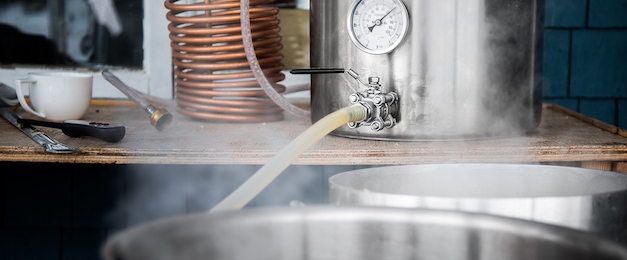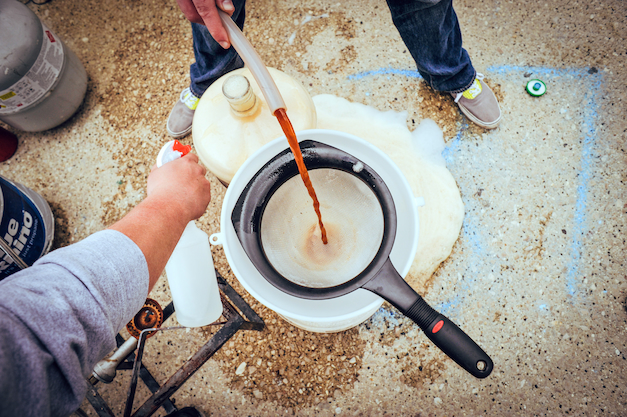Homebrewing: Important Equipment Aspects to Consider
In a COVID-19 world since 2020, we got to experience a lot of things that hadn’t even dawned on us we ever would. One of them was having favourite bars and breweries close their doors which hit many beer lovers pretty hard. Not being able to get to taste the various delicious savoury brews from Australia and beyond, and having plenty of time at hand, made for the perfect climate for homebrewing.
Come to think of it, it’s a very thrilling and rewarding hobby to keep us entertained at home, which could be just what the CDC ordered in times of social distancing, quarantines, and lockdowns. In addition to taking part in an age-old tradition by learning more of the process of the brews, and how to have fun mixing different ingredients for different results, you get to have your efforts bear fruits when you taste your beers.

Not to mention, you could also surprise loved ones with your impressive skills, gifting them their bottles of this amazing drink. To get started, of course, you’d require the proper bits of beer making equipment, the information on how to use them, and the patience to follow each of the stages of the process correctly.
The Essential Homebrewing Equipment
Much like making home-distilled schnapps, without the gear, you won’t be able to truly get a taste of it. However, don’t fret expecting this kind of shopping to drain your wallet since you can easily find a more affordable all-inclusive starter kit that’s just under $100 at the specialised stores.
Also, don’t think you’d have to pile up on every bit of equipment there is as a beginner – going minimal is the best strategy when you’re getting the gist of the hobby. Should you choose to get more involved in it afterwards, making it an essential part of your life, then you can invest in more advanced pieces. What you can expect to get with the specialised home brew kit, besides instructions, are the following pieces:

- fermenter
- mixing spoon
- airlock
- grommet
- tap
- hydrometer
- mixing spoon
- PET bottles with caps
- first brew with dextrose
Additional pieces you’d require include barrels with lids, buckets with lids for sanitising and bottling, and acid-based or iodine food-grade sanitisers. In terms of ingredients, malt extracts, hop oils, carbonation drops, enhancers and sachets of yeast are crucial for a hassle-free experience.
The Important Aspects About Homebrewing Equipment
It doesn’t only help to get the required beer making equipment, you’d also have to be careful with how you use it since beermaking is a delicate process. For instance, you can’t fill up the fermenting bucket to its full capacity, otherwise, you’d block the airlock with krausen.
As long as you have the airlock where it ought to be, you have nothing to worry about having too much headspace, nor any taste altering going on if you keep the lid on and protect it from oxygen and bacteria. Topping off isn’t an issue with the secondary fermenter considering there’s no fermenting there.
Now, when deciding on the material of fermenters as the essential beer making equipment, durable plastic is a great choice for beginners, however, once you excel in the hobby, you might choose the glass or stainless steel alternatives. The thermometer would come in handy with checking the pitching temperature to ensure you have the right one for your brew when you add the yeast.

Not minding this crucial aspect means adding yeast when it’s too hot or cold, thus preventing the much-needed fermentation. Temperature also plays an important role when storing the beer, ranging between 18 to 25°C for a week. After you pass the seven days, the temperature should be lower, between 8 to 12°C, for your storage of up to three weeks.
The mixing spoon, i.e. stirrer, is of help with stirring the warm water and it has to be long enough for you to be able to use it properly. While you might find it handy to look for wooden kitchen spoons among your essential kitchen tools, the ideal are stainless steel options because they enable sterilisation and elimination of microbes. Speaking of sterilisation, this leads us to the next important aspect.
The Importance of Sanitising
Before you can even begin to use your adequate beer brewing kit, you first have to take care of hygiene. This is of importance considering anything that comes in touch with your brew can easily contaminate it, thus altering the taste beyond repair, or even ruining it entirely.
Before even adding the wort, you ought to clean every piece of the equipment with a proper sanitiser. A great solution you can make at home is mixing a tablespoon of bleach with one gallon of water to soak all the items in for about 20 minutes before rinsing and letting them drain.

If you’re looking for anything specialised, the equipment stores have suitable products to supply you with for an effective clean of everything, including bottles. Don’t forget to also sterilise the environment where you intend to do the homebrewing, to make sure it’s as spotless as a hospital. Microbes can settle anywhere so be aware and prepared!



